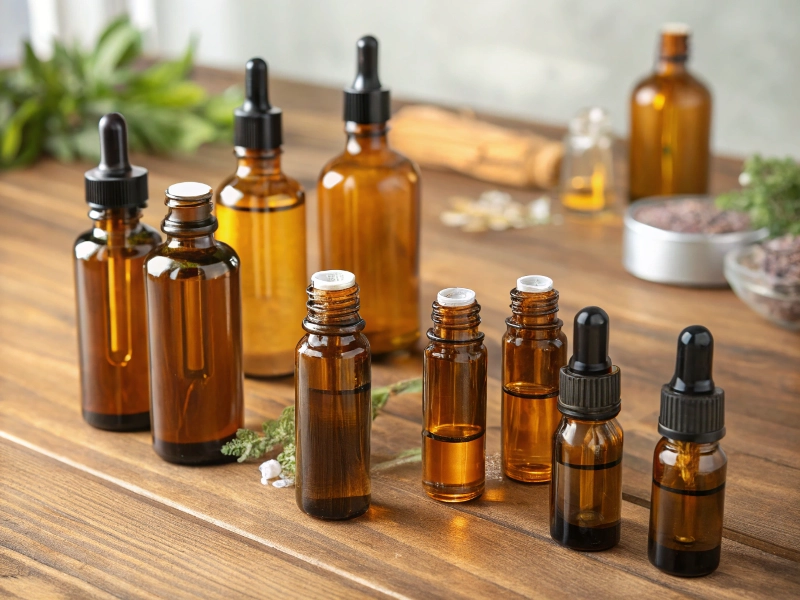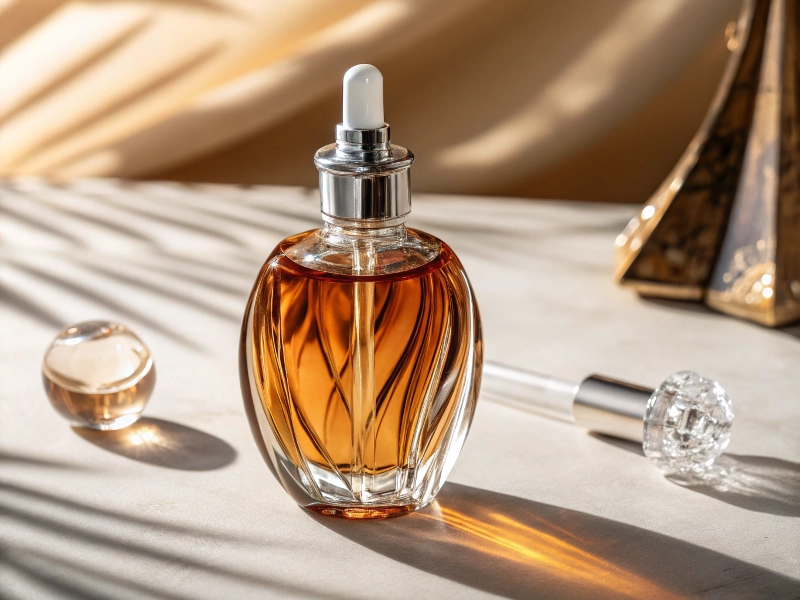Ever ruined a $50 bottle of rose oil with a bad recipe? This guide shares simple measurements, weight-based tricks, and safe tips to nail your essential oil blends, whether for relaxation or your skincare brand.

Why Drop Counts Matter
Mixing essential oils is like cooking a gourmet dish—one wrong move, and your blend is off. A 5ml bottle of patchouli might yield 75 drops, while lemon gives 150, frustrating beginners and businesses alike. I’m a leader at Crystal, a Xuzhou-based glass bottle manufacturer exporting 150 million bottles yearly. I’ve heard countless stories of ruined blends from guessing drops.
How do you measure accurately every time? Learn weight-based measurements, bottle size estimates, and easy consumer tips to use essential oils safely and avoid wasting costly oils.
Quick tip for beginners: Use a 1ml syringe for precise blending to save your pricey oils. Now, let’s explore three ways to master drop counts.
1. Weight-Based Measurements for Businesses
Crafters and brands need reliable batches. Guessing drops leads to uneven products and lost profits. How can you ensure exactness?
Why Weight Beats Drops
Drops vary, but weight (grams) is steady. Top brands use weight for consistent batches and to pass audits (Aromatherapy Council). At Crystal, we helped Glow Naturals, a U.S. skincare brand, switch to weight-based recipes for their lavender serum, passing FDA audits effortlessly.
Calibrate Your Dropper
Calibration—adjusting your dropper for accurate measurements—is simple:
- Use a 0.01g precision scale.
- Drop 20 drops of oil onto the scale.
- Record weight (e.g., 0.5g = 40 drops/g).
- Convert recipes (e.g., 100 drops = 2.5g).
A Seattle soap maker, Jane, told us: “Crystal’s calibration tip saved my business from costly batch errors!” This trick boosted her efficiency by 20%.
Cost-Per-Drop
Know your costs to price right. A 10ml bottle (~200 drops) at $10 means $0.05 per drop. Use your calibrated count for accuracy. An Australian candle maker we worked with raised margins by 15% with this method.
While businesses need cost accuracy, consumers and crafters often start with bottle size estimates. Here’s what to expect.
2. Standard Drop Counts by Bottle Size
Standard bottles—5ml, 10ml, 15ml, 30ml—are common, but drop counts confuse users. How many drops do you get?
Drop Count Table
Here’s a guide, based on a 0.05ml drop (Tisserand Institute):
| Bottle Size | Estimated Drops | Crystal’s Amber Droppers |
|---|---|---|
| 5ml | ~100 drops | 90-110 drops |
| 10ml | ~200 drops | 180-220 drops |
| 15ml | ~300 drops | 270-330 drops |
| 30ml (1oz) | ~600 drops | 540-660 drops |
Crystal’s amber droppers, with 0.8mm orifice reducers (small inserts controlling drop size), deliver uniform drops for precision.
Why Estimates Vary
Counts depend on oil type and dropper. For exact results, calibrate your setup. For advanced techniques, check Crystal’s blog (Crystal Blog).
With counts clarified, let’s explore why they vary.
3. Factors Affecting Accuracy
Drop counts aren’t fixed. Oil properties and bottle design create variability. What causes this, and how can you manage it?
| Factor | Impact | Solution |
|---|---|---|
| Viscosity | Thicker oils yield fewer drops | Calibrate for each oil type |
| Dropper Design | Plastic droppers are less precise | Use glass droppers or orifice reducers |
| Temperature | Warm oils form smaller drops | Store at stable temperatures |
Oil Viscosity
Thicker oils like patchouli form larger drops (~0.06ml), yielding fewer drops per ml. Thinner oils like lemon create smaller drops (~0.04ml), increasing counts. A client swapped eucalyptus for sandalwood in a 10ml bottle and was shocked when their recipe failed—viscosity was the culprit.
Dropper and Bottle Design
- Glass droppers: Deliver reliable, smaller drops.
- Plastic droppers: Produce larger, less precise drops.
- Orifice reducers: Crystal’s 0.8mm designs increase drop counts by creating tiny drops.
Roll-on bottles are great for pre-diluted skin use but less precise. Dropper bottles, like Crystal’s amber glass, excel for diffusers and blending.
Environmental Impacts
Warm oils become thinner, yielding smaller drops. Travel-related pressure changes also affect drop size. Store oils at a stable temperature to minimize surprises. For businesses, consistent dilution (1-2%, or 6-12 drops per 1oz carrier oil) ensures uniform products.
With factors covered, let’s share tips for consumers.
4. Easy Tips for Consumers
Beginners want safe blends without stress. Missteps can irritate skin or waste oils. How can you blend like a pro?
Use Simple Tools
Avoid eyedroppers—they’re unreliable. Grab a $10 syringe kit with 1ml markings. It’s perfect for DIY enthusiasts starting with a 5ml bottle. I once over-dosed a lavender blend, causing a rash—syringes fixed that fast.
Safe Dilution
Dilute oils to 1-2% for skin use: 1-2 drops per 5ml carrier oil (a neutral oil like jojoba) (WebMD). For a calming diffuser blend, try:
- 3 drops lavender (middle note)
- 2 drops bergamot (top note)
- 1 drop cedarwood (base note)
Mix in 100ml water for a soothing vibe. A 2023 study in the Journal of Essential Oil Research found drop sizes vary by 30% due to viscosity, so measure carefully.
Store Smart
Use Crystal’s amber glass bottles, made from high-grade borosilicate, to block 99% of UV light and resist corrosion. Store in a cool, dark place. Oils last 1-3 years if stored right, keeping drops steady.
Common Questions
- What’s the 30-50-20 rule? Blend 30% top notes (e.g., lemon), 50% middle notes (e.g., lavender), 20% base notes (e.g., patchouli) for balanced scents.
- How much is 20 drops? About 1ml or 0.5g for thin oils.
- Drops in 1oz carrier oil? 6-12 drops for 1-2% dilution.
- Drops in a 4oz spray bottle? 72-144 drops for 1-2% dilution.
- Drops in 5ml doTERRA or Young Living? ~100 drops, but test their droppers.
- Can too many drops harm me? Yes, over-dosing risks skin irritation. Stick to 1-2% dilution.

Conclusion: Blend with Confidence
Use weight-based tricks, bottle estimates, and consumer tips to master essential oils without waste. Precision saves time, money, and stress, whether you’re a hobbyist or scaling a brand. Crystal’s amber glass bottles, crafted in our 30,000-square-meter Xuzhou facility, ensure your oils stay potent and precise.
Ready for standout packaging? Contact Crystal for custom designs that shine.
About the Author: With 15 years at Crystal, I’ve designed glass packaging for global brands. Running our Xuzhou plant taught me precision in production mirrors precision in blending—one error can derail everything.




